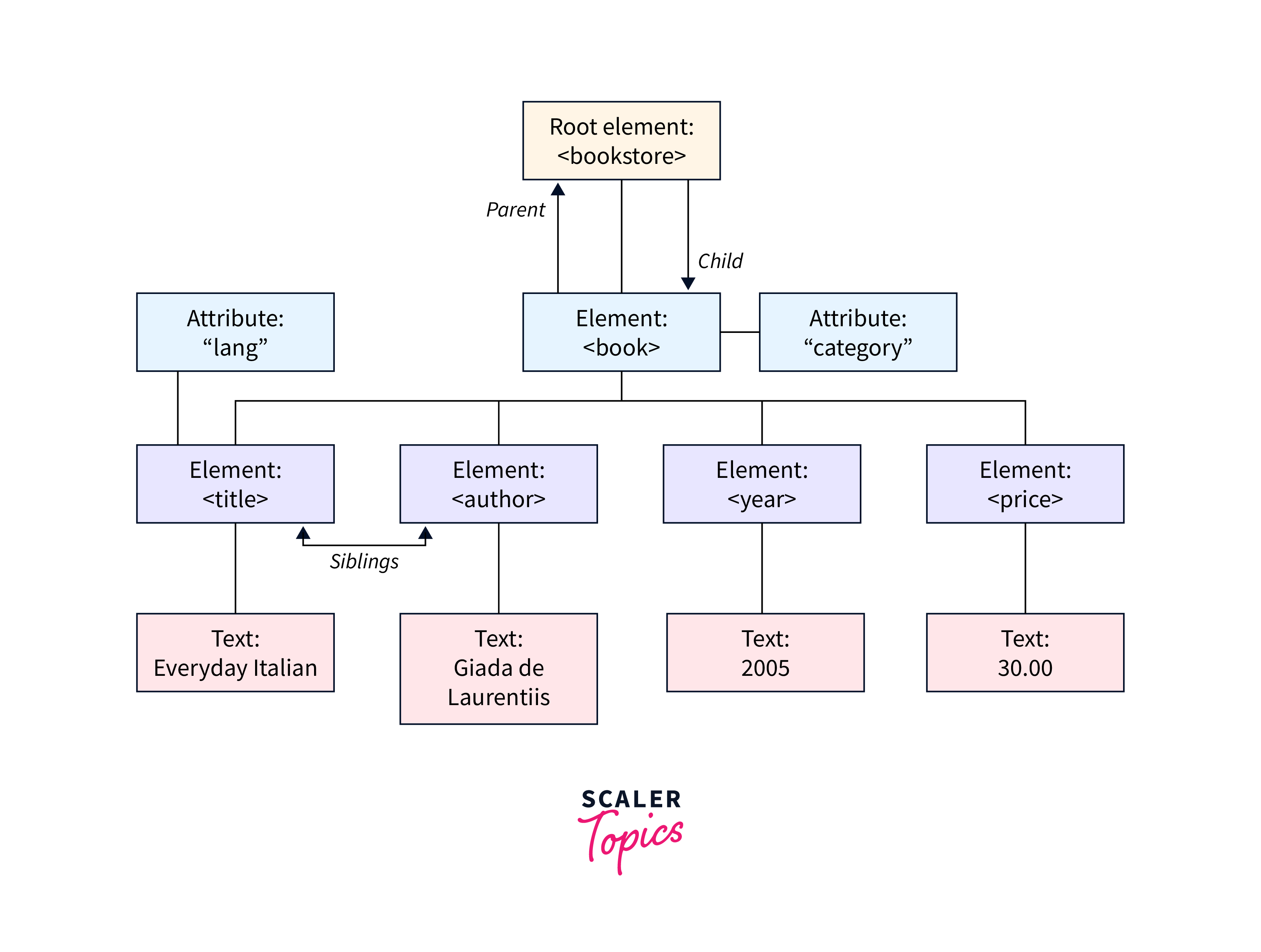XML Tree Structure
Overview
XML (Extensible Markup Language) is a widely used language for representing and exchanging data on the internet. It provides a flexible and structured way to organize information. One of the key features of XML is its hierarchical structure, known as the XML tree structure. This structure allows data to be organized in a way that is easy to understand and processed by both humans and machines.
In this article, we will dive into the details of XML tree structure, exploring its rules, examples, and its self-describing syntax.
XML Document Example
To better understand the concept of an XML tree structure, let's examine an example:
In this example, we have an XML document representing a bookstore. The root element is <bookstore>, which contains two <book> elements. Each <book> element contains child elements like <title>, <author>, and <price>, representing the title, author, and price of a book respectively.
Pictorial representation of some other sample XML documents:

This example showcases the hierarchical nature of XML, where elements can have parent-child relationships, creating a tree-like structure.
Self-Describing Syntax
One of the strengths of XML is its self-describing syntax. This means that within an XML document, both the data and its structure are clearly defined. Unlike other data formats, XML includes tags that define the type and purpose of each piece of data.
For instance, in the XML example above, the <title>, <author>, and <price> tags explicitly state what kind of information they contain. This makes it easy for both humans and machines to interpret the data without the need for additional documentation.
This self-describing nature of XML makes it a powerful tool for data interchange between different systems and platforms.
XML Tree Rules
1. Well-Formedness
For an XML document to be considered valid, it must follow certain rules of well-formedness. These rules include:
- Every opening tag must have a corresponding closing tag.
- Tags must be properly nested. In other words, they cannot overlap or be improperly ordered.
- Attribute values must be enclosed in quotes (either single or double).
- The XML document must have a single root element that contains all other elements.
2. Parent-Child Relationships
Elements in an XML document can have parent-child relationships. A parent element contains one or more child elements, which are nested within it. For example, in the XML document example of the bookstore, <bookstore> is the parent element of <book>, and <book> is the parent element of <title>, <author>, and <price>.
3. Attributes
Elements can also have attributes, which provide additional information about the element. Attributes are specified within the opening tag and follow a name-value pair format. For example:
Here, location is an attribute of the <bookstore> element with the value New York.
4. Empty Elements
Some elements may not have any content and are represented as empty elements. These are written in a self-closing format, denoted by a forward slash before the closing angle bracket, like so:
This concise format is particularly useful when an element doesn't require child elements or textual content, but instead relies solely on attributes to convey information.
Empty elements serve as placeholders or markers within the XML structure, indicating the presence of specific data points without the need for additional content. This can streamline the representation of information, making the XML document more efficient and easier to process.
5. Text Content
Elements can also contain text content, which provides the actual information or data. This text content is enclosed within the opening and closing tags of an element. For instance, in the <title> element of our example, the text content includes the titles "Introduction to XML" and "Advanced XML Techniques".
This textual information forms the heart of the XML structure, conveying meaningful data that can be processed and understood by both humans and machines alike. It is essential to note that the text content must adhere to the rules and conventions of XML, ensuring it is properly formatted and meaningful within the context of the document.
Conclusion
- XML's hierarchical structure is represented as a tree, allowing for organized data representation.
- XML documents are self-describing, meaning they include information about the data's structure.
- Rules of well-formedness ensure the validity of an XML document.
- Elements can have parent-child relationships, and attributes provide additional information.
- Empty elements and text content are integral parts of XML structure.
